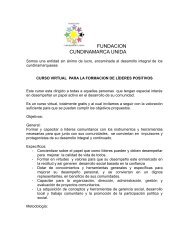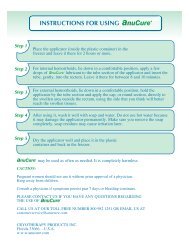Gunnebo Classic Product Catalog
Gunnebo Classic Product Catalog
Gunnebo Classic Product Catalog
- No tags were found...
You also want an ePaper? Increase the reach of your titles
YUMPU automatically turns print PDFs into web optimized ePapers that Google loves.
INFORM A RIGGER - PASS THE WORDGeneral worksite regulations require “No hoisting,lowering, swinging or traveling shall be done whileanyone is on the load or hook.” - OSHA 1910.180 (h)(3) (v).(j) Self-locking hooks shall be locked during use.(k) “When a hook is equipped with a latch, the latchshould not be restrained from closing during use.” -ASME B30.10-1.3.Construction worksite regulation stipulates: “The useof a crane or derrick to hoist employees on a personnelplatform is prohibited, except when the erection, use,and dismantling, of conventional means of reachingthe worksite, such as a personnel hoist, ladder, stairway,aerial lift, elevating work platform or scaffold,would be more hazardous or is not possible becauseof structural design or worksite conditions.” - OSHA1926.550(g) (2).“Bridles and associated rigging for attaching the personnelplatform to the hoist line shall be used only forthe platform and the necessary employees, their toolsand the materials necessary to do their work and shallnot be used for any other purpose when not hoistingpersonnel.” - OSHA 1926.550 (g) (4) (iv) (E).Alloy steel BK self-locking hooks may be used to rigpersonnel platforms when lift system is in full compliancewith OSHA 1926.550(g) and TABLE 3.• Never rig a hook to a load improperly ... Avoiddropped loads and hook damage.“Safe operating practices ...” OSHA 1910.184 (c)“Operating practices ...” ASME B30.5-3.2.“Operating practices ...” ASME B30.9-1.10, 2.10, 3.10,4.10, 5.10, 6.10.“Operating practices ...”(c) Loads shall be centered in the base (bowl/ saddle)of hook to prevent point loading of the hook. (SeeFigure 1a, 1b & 1c)(d) Hooks shall not be used in such a manner as to placea side load or back load on the hook. (See Figure 2a& 2b)(e) When using a device to close the throat openingof the hook, care shall be taken that the load is notcarried by the closing device. (See Figure 3a & 3b)(f) Hands, fingers and body shall be kept from betweenhook and load...(i) The use of a hook with a latch does not precludethe inadvertent detachment of a slack sling or a loadfrom the hook. Visual verification of proper hookengagement is required in all cases.“Operation ...” - ASME B30.16-3.“Operation ...” - ASME B30.21-1.7; 2.6; 3.6.Self-locking hooks shall not be rigged with morethan two (2) sling legs in the hook saddle and slingleg angles shall not be greater than 45° from hookcenterline. (Figure 1b)Self-locking hooks shall be rigged with a master ringor shackle when three (3) or more sling legs are usedor sling leg angles exceed 45° from hook centerline.(Figure 1c)Synthetic slings may require a working load limit(WLL) reduction when used in self-locking hookeye or saddle. See synthetic sling manufacturers’recommendations.34
















